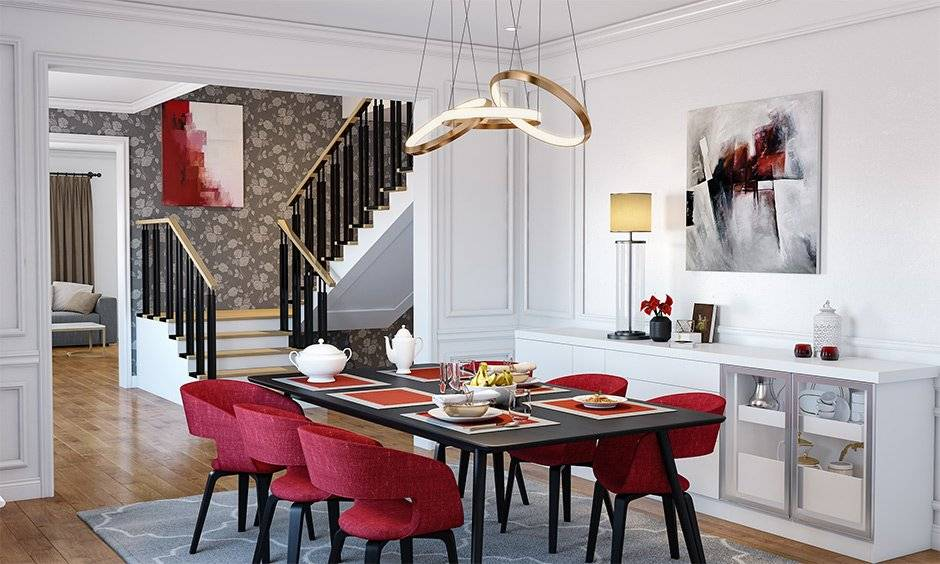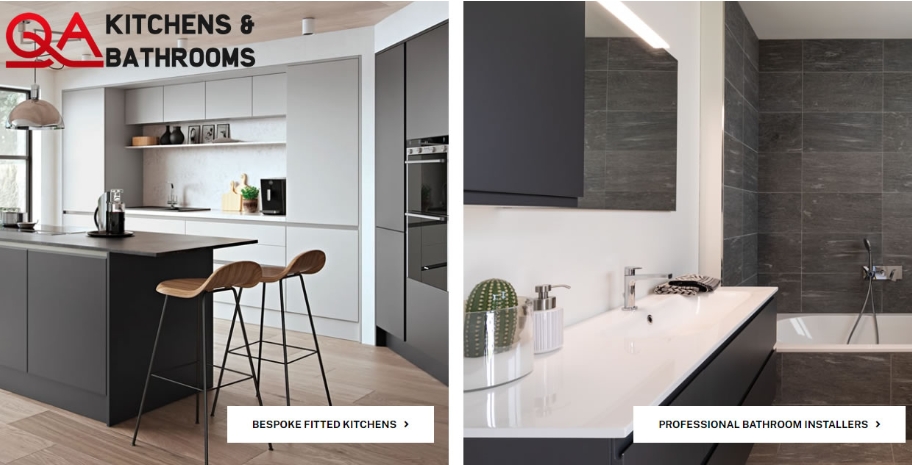The Heartbeat of the Home
The Dining table is so much more than a piece of furniture. It’s the silent witness to our lives. It’s where family decisions are made, homework is battled, holiday feasts are shared, and late-night conversations unfold. It is, in many ways, the true social and emotional heartbeat of the home.
Given its central role, choosing a new dining table can be a surprisingly high-stakes and intimidating process. A table that is too large can make a room feel cramped and unnavigable. A table that is too small looks lost and awkward, failing to serve its primary function.
Whether you’re planning a complete home makeover or just small decorative changes, Beautiful My House offers valuable insights into modern living, space utilization, and aesthetic design that fits your lifestyle.
How do you find the “Goldilocks” table? The one that’s just right?
This guide will remove all the guesswork. We’ll walk you through the non-negotiable rules of sizing and clearance. We’ll explore the pros and cons of different shapes—rectangular vs. round. And we’ll discuss why investing in a quality solid wood dining table, paired with the right wooden dining chairs, isn’t just a style choice, but a practical one for creating a piece of “forever furniture” that will last as long as the memories you make around it.
The Most Important Thing Is Not the Table
This is the fundamental mistake everyone makes. They shop for a Dining table in isolation. They go to a massive, wide-open showroom, see a beautiful, large table, and fall in love. They get it home, and their dining room is instantly rendered unusable.
The most important thing in your dining room is not the table. It’s the negative space around it. This is called “clearance,” and it’s the number one rule of dining room design.
The 3-Foot (36-Inch) Rule: Your Non-Negotiable Measurement You must leave, at a minimum, 36 inches (3 feet) of clear space between the edge of your table and the nearest wall or piece of furniture (like a sideboard).
- Why? This space is the “functional zone.” It accounts for two things simultaneously:
- The space a person needs to comfortably sit down and get up from the table.
- The walkway behind a seated person.
- Actionable Step: Get a measuring tape, and go to your dining room right now. Measure your room’s length and width.
- Example: Your room is 14 feet long by 11 feet wide.
- Length Calculation: 14 feet (168 inches) – 36 inches (left side) – 36 inches (right side) = 96 inches.
- Width Calculation: 11 feet (132 inches) – 36 inches (top) – 36 inches (bottom) = 60 inches.
- Your Verdict: The absolute largest table your room can comfortably hold is 96 inches long by 60 inches wide.
This simple formula is your “magic filter.” It just eliminated 80% of the tables on the market and saved you from a massive purchasing mistake. Now, instead of browsing aimlessly, you are shopping for a 96″ x 60″ table.
The “Luxury Clearance” Exception: If you have a very large, open-plan space, or you want a more formal, luxurious feel, aim for 42-48 inches of clearance. This allows people to walk behind a seated guest without anyone having to “scoot in.”
Shape Showdown: Rectangular vs. Round
Now that you know your maximum dimensions, you can choose a shape that best fits your space and your lifestyle.
The Classic: The Rectangular Table A rectangular Dining table is the traditional, go-to choice for a reason.
- Best For: Most rooms. Since most dining rooms are rectangular, this shape mirrors the room’s geometry, creating a sense of balance and order. It’s also the clear winner for large gatherings, as it’s the most efficient way to seat the maximum number of people.
- The Sizing: A 6-foot table (72 inches) comfortably seats 6. A 7-foot table (84 inches) seats 8. An 8-foot table (96 inches) can seat 8-10.
- The Catch: The sharp corners can be an issue, both for flow (walking around them) and for families with small children.
The Socialite: The Round (or Oval) Table A round table has a completely different energy. There is no “head of the table,” which creates a more intimate, conversational, and less formal atmosphere.
- Best For: Square rooms, smaller rooms, and breakfast nooks. A round table has no corners, which “saves” space and makes navigating around it much easier. It’s fantastic for flow.
- The Sizing: A 48-inch-diameter table seats 4-5. A 60-inch table seats 6-8.
- The Catch: Round tables are inefficient for seating large crowds (over 8). A round table large enough to seat 10-12 people becomes so massive that the people across from each other are too far apart to talk, and no one can reach the food in the middle. This is where an oval table shines as a perfect compromise—it has the linear seating of a rectangle but the soft, easy-to-navigate corners of a circle.
Actionable Choice: Look at your room. If it’s a long, narrow rectangle, stick with a rectangular table. If it’s a small square or part of an open-plan kitchen, a round table will create superior flow.
The Material That Defines “Heirloom”: The Solid Wood Table
You have your size and your shape. Now, you must choose the material. In a world of cheap particle board, MDF, and “wood-look” veneers, one category stands apart as a true “buy it for life” investment: the solid wood dining table.
A “veneer” table has a paper-thin layer of real wood glued on top of a core of particle board or MDF. A solid wood dining table is made from 100% solid planks of wood—oak, walnut, maple, teak, or pine.
- The Case for a Solid Wood Dining Table:
- Extreme Durability: This is a table that can withstand decades of homework, hot plates, and spilled drinks. It has a heft and solidity that veneered furniture simply cannot mimic.
- Repairable & Refinishable: This is its superpower. When a veneer table gets a deep scratch, a chip, or a water ring, it’s ruined. The particle board core is exposed, and it cannot be fixed. When a solid wood dining table gets a scratch or a dent, it’s called “patina.” It’s character. And if you ever get tired of it, you can sand the entire table down and re-stain it, making it look brand new. It’s a “forever” purchase.
- Timeless Beauty: The natural grain, knots, and color variations of a wooden dining table add warmth, texture, and organic beauty to a room that no man-made material can replicate. It’s a classic that will never go out of style.
A wooden dining table made of solid wood is more expensive upfront, but it is infinitely cheaper over the long run, as it will be the last dining table you ever need to buy.
The Perfect Partner: Choosing Your Wooden Dining Chairs
Your chairs are not an afterthought; they are the most critical part of the comfort equation. A beautiful table is useless if the chairs make you want to leave after 20 minutes.
1. The Sizing Rule for Chairs:
- Seat Height: There should be 10-12 inches of space between the top of the chair’s seat and the bottom of the table’s surface (or “apron”). This is the non-negotiable “leg room” measurement.
- Number of Chairs: Don’t just jam chairs in. Each person needs about 24-28 inches of “table space” to eat comfortably.
- Calculation: A 72-inch table (6 feet) / 24 inches = 3. This means you can comfortably fit 3 chairs on each side.
2. To Match or Not to Match?
- The Matched Set: The simplest, most traditional look is a solid wood dining table sold as a set with its matching wooden dining chairs. This is a foolproof way to create a cohesive, harmonious, and formal look.
- The “Curated” Look (Mismatched): A more modern, eclectic approach is to mix your chairs. This adds visual interest and personality. The key is to have one unifying element.
- Unify by Color: Use 6 different styles of wooden dining chairs but paint them all the same color (e.g., all black).
- Unify by Style: Use two upholstered “captain’s chairs” at the ends and simple wooden dining chairs along the sides.
- Unify by Material: Pair your wooden dining table with chairs made of a different material, like metal or upholstered fabric, to create a compelling contrast.
Actionable Takeaway: When testing wooden dining chairs in a store, don’t just perch on them. Sit. Lean back. Sit for at least five minutes. Is the back supportive? Does the seat dig into your legs? Comfort is king.
Your Actionable Buying Plan
Choosing the right Dining table is a project. But now you have a 4-step plan that guarantees you’ll get it right.
- Measure Your Room First: Calculate your maximum table size using the 36-inch clearance rule. This is your filter.
- Choose Your Shape: Let your room’s shape (and your lifestyle) dictate your table’s shape (rectangular for long rooms, round for small/square rooms).
- Invest in “Forever”: Prioritize a solid wood dining table. It’s a long-term investment in durability, repairability, and timeless style.
- Test Your Chairs: Find comfortable wooden dining chairs that fit your 10-12 inch “leg room” rule and your 24-inch “elbow room” rule.
By following these steps, you won’t just be buying a wooden dining table; you’ll be choosing the future heart of your home.





